Yoga Day 2019
21st June is celebrated as International Yoga Day. Today we look at Suryanamaskara.
The name Surya Namaskar is from the Sanskrit सूर्य Sūrya, “Sun” and नमस्कार Namaskār, “Greeting” or “Salute”.[4] The name identifies the sun as the soul and source of all life.
Surya Namaskar is a sequence of around twelve asanas connected by jumping or stretching movements, varying somewhat between schools. In Iyengar Yoga, the basic sequence is Tadasana, Urdhva Hastasana, Uttanasana, Uttanasana with head up, Adho Mukha Svanasana, Urdhva Mukha Svanasana, Chaturanga Dandasana, and then reversing the sequence to return to Tadasana; other poses can be inserted into the sequence.
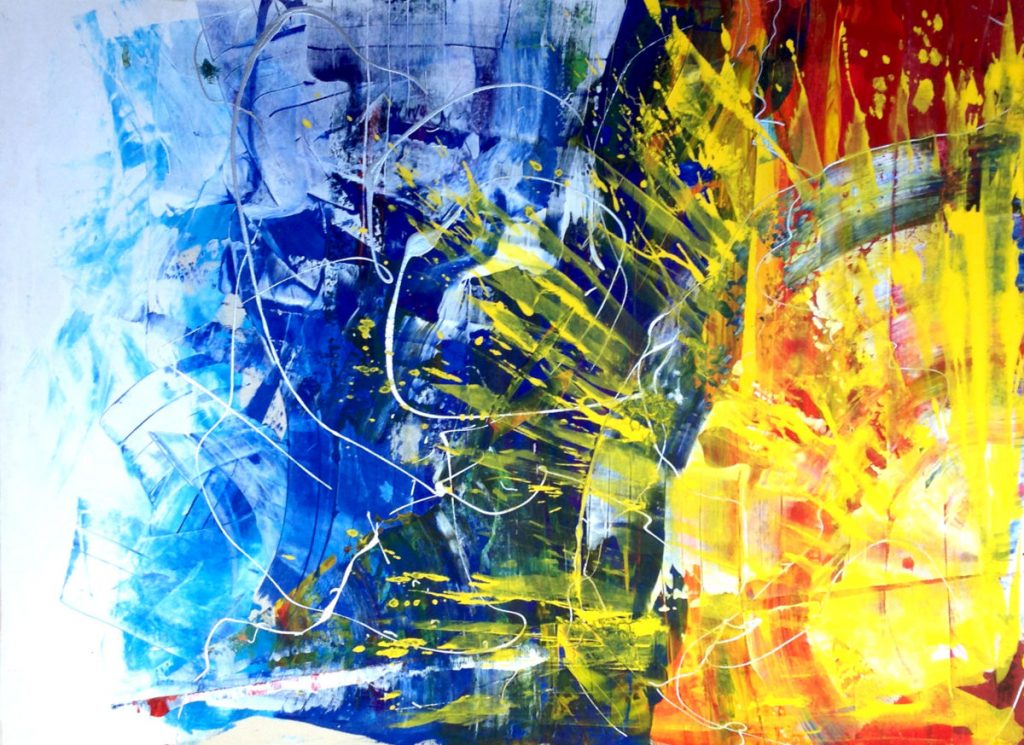
The suryanamaskara is a relatively modern rendering of ancient sun salutations, and also a derivative of Surya Kriya, a way of aligning yourself with the sun and a much more refined process which needs enormous attention in terms of the geometry of the body. It involves a certain level of breath and powerful activation of energy.
One set of suryanamaskara consists of twelve asanas. One cycle of suryanamaskara comprises two such sets done for the right and left side. You can practice the sequence slowly by staying in each asana for few breaths or you can practice it at a faster pace, breathing in and out as you move from one asana to the other.
Repeating these cycles help you lead an active and healthy life as it regulates and balances the solar energy of the body which flows through pingala nadi. It is performed in a steady rhythmic manner, which also reflects the biorhythms of the body, 24 hours of the day, and the 12 zodiac signs and this rhythmic process helps transform your mind and body completely.
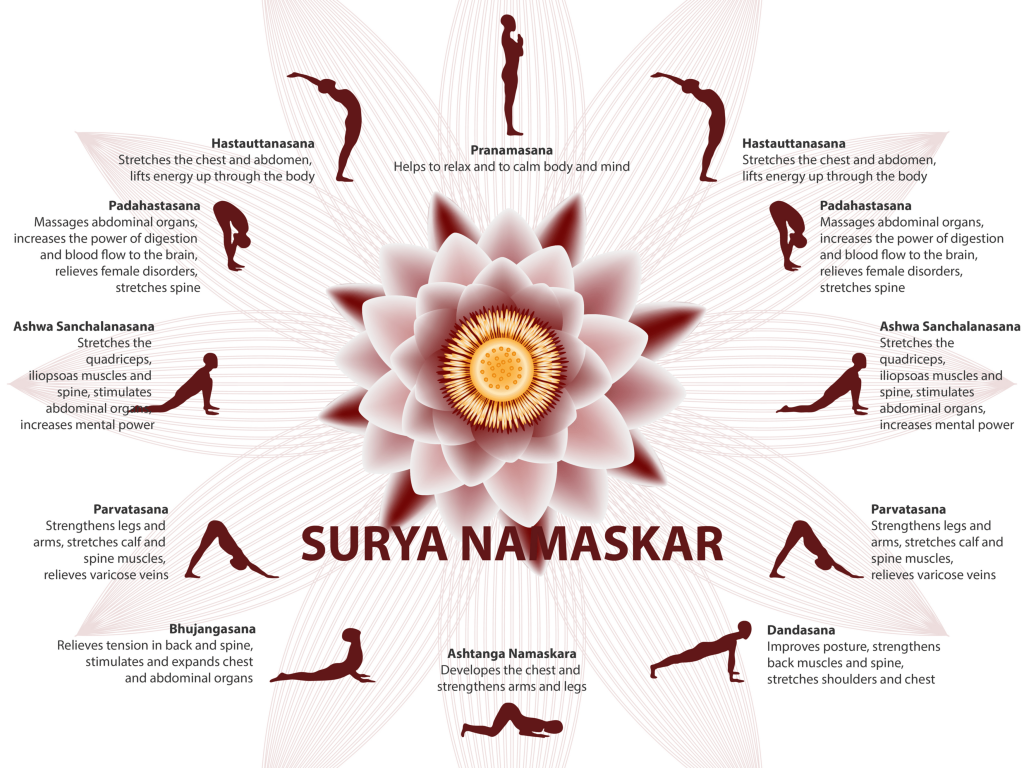
If you are beginner, it is advisable to first practice under an expert’s guidance because finding the right alignment and balance in each asana takes a little time. It is only after you get comfortable with each asana and the flow, can you slowly shift your focus to breathing. It is the combination of rhythmic breath and asana that makes this exercise a powerful detox tool.
The 12 steps of Suryanamaskara
- Pranamasana or Anjali Mudra / Prayer Pose
- Utthana Hasthasana / Upward Salute
- Padahastanasana / Hand To Feet
- Ashva Sanchalanasana / Equestrian Pose
- Phalakasana / Plank Pose
- Ashtanga Namaskra / Salute With Eight Limbs or Knee Chest and Chin
- Bhujangasana / Cobra Pose
- Adho Mukha Svanasana / Downward Facing Dog
- Ashva Sanchalanasana / Equestrian Pose
- Padahastanasana / Hand To Feet
- Utthana Hasthasana / Upward Salute
- Pranamasana or Anjali Mudra / Prayer Pose
1. Pranamasana/ Anjali Mudra
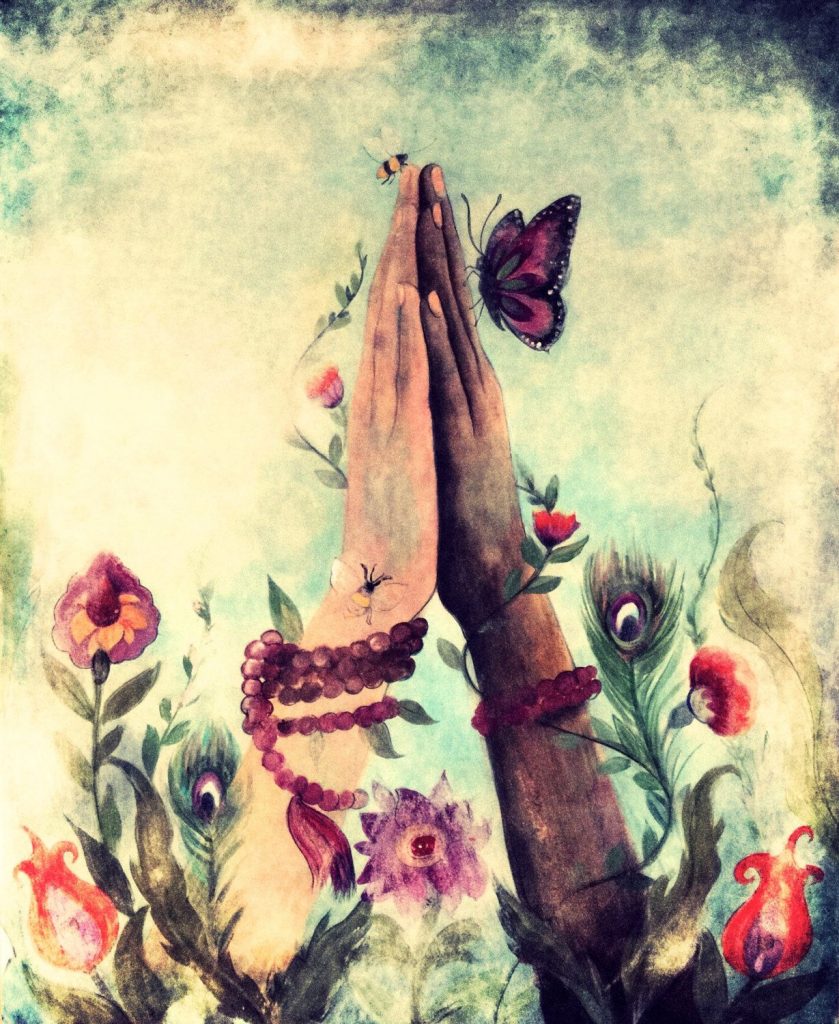
With your feet together or hip width apart, evenly distributing weight on all four corners of your feet, aligning the center of your head to the pelvis, bring your palms together and press them, giving gentle pressure on fingertips and base of your palm. This is essentially Tadasana, with your palms joined in a Namaskara.
Fingers are together and firm with fingertips pointing upward and thumbs slightly touching the heart center / center of the chest.
Relax your neck and shoulders.
This is a simple posture and also the first and last posture in Surya Namaskara.
It helps center the mind and body and helps reduce anxiety and stress.
2. Utthana Hasthasana
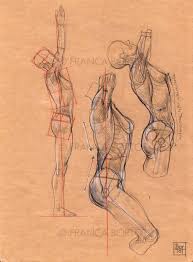
Keeping the palms joined in the previous prayer position, breathe in and lift your arms up and bend backwards slightly. Your biceps should lie close to your ears. This posture is to loosen up your body by stretching the entire body backwards, but keep your feet rooted to the ground.
Hands can be adjusted to stay either in Namaskara mudra or shoulder width apart.
Benefits
Therapeutic for asthma
Reduces symptoms of backache, fatigue and mild anxiety
Stretches the shoulders and armpits
Improves digestion
Caution
Avoid raising your arms if suffering from neck or shoulder injury.
Avoid looking up if feeling dizzy.
3. Padahastanasana
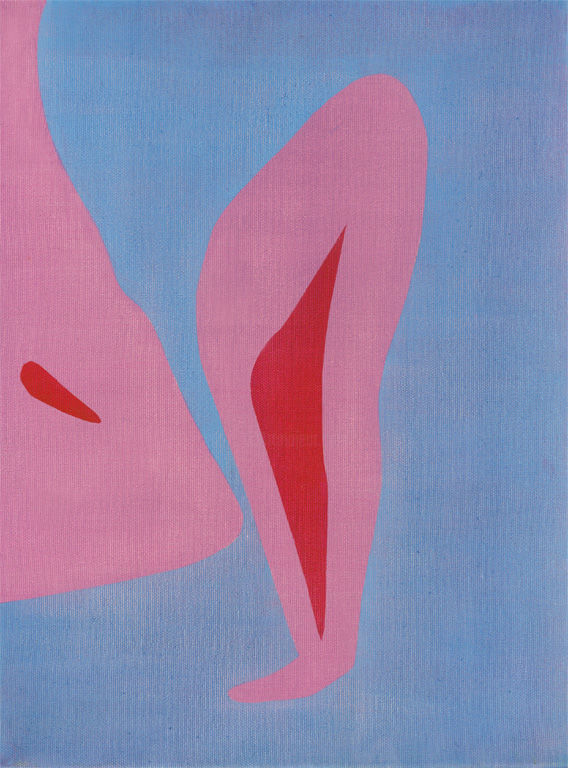
As you exhale, prepare to bend forward by opening your hands wide and dropping them down, next to the feet.
It is okay to keep your knees gently bent.
Keep your neck and shoulder relaxed and see that your spine does not curve.
Press into your heels softly so weight is evenly distributed.
Benefits
Therapeutic for insomnia, osteoporosis
Helps relieve anxiety, stress, headache.
Strengthens thighs and knees
Stretches hips, hamstrings and calves
Helps improve digestion
Helps reduce symptoms of nasal-throat problem
Caution
Lower back pain, neck injuries, high bp, heart problem, ear/eye infection.
4. Ashva Sanchalanasana
From Padahastasana, bend your legs at the knee to place the palms on the mat, in line with your feet.
Breathe in/inhale and take your right leg back to a wide stance. As you do this, your left leg bends at the knee in a 90 degree angle.
The knee and heel of the left leg form a straight line and your right foot is balanced on toes.
Else you can rest your right knee on the mat for support and place right insteps on the floor.
The weight has to be evenly distributed and you should avoid leaning to the front or back.
Benefits
Stretches and strengthens quadriceps and the entire lower body.
Stimulates digestive system and tones kidney and liver.
Builds willpower.
Improves hip flexibility.
Lengthens spine and increases lung capacity,
Caution
Knee and neck injury.
Use modifications such as looking straight and not down and resting back knee on the mat for support.
5. Phalakasana
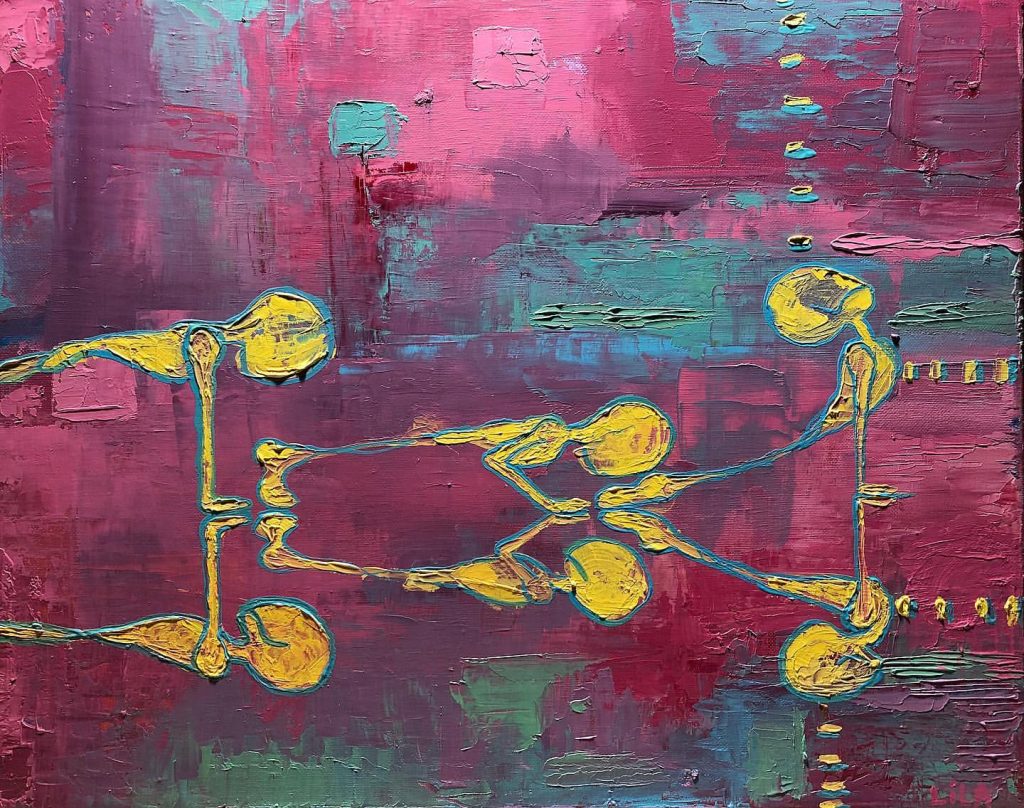
Exhale and step your left leg back to form a plank pose.
See that your shoulders, elbows and wrists are stacked and perpendicular to the floor.
Draw the shoulder blades in towards each other then spread them, widening your collar bones.
Keep the neck relaxed, in line with your spine.
Spread your fingers wide with middle finger facing the front of the mat.
Roll and press your toes into the mat but avoid tightening your knees.
Engage your core and avoid arching by keeping the tailbone tucked in and lengthen it towards the heels.
Benefit
Strengthens arms, wrists and shoulder.
Tones abdomen and builds core strength and endurance.
Caution
Carpal tunnel syndrome, wrist injury or severe low back pain.
6. Ashtanga Namaskra
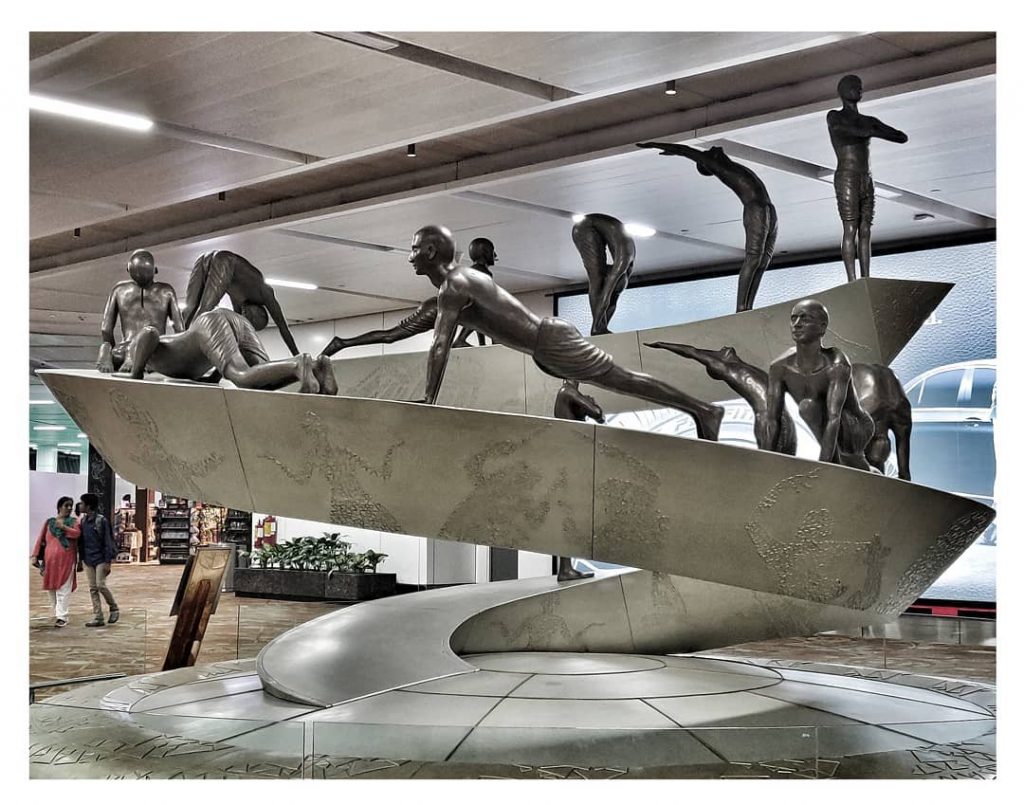
From Phalakasana, drop your chin, chest and knees on the mat at the same time. This is called Ashtanga Namaskara – Ashtanga means eight, and eight limbs touch the floor at the same time, hence the name.
The chest is placed right between the palms.
The elbows are bent, hugging your body and pointing to the ceiling.
The hips stay up/off the mat.
Benefit
Expands the chest and improves flexibility of the back and spine.
Tones and strengthens the arms, shoulders and legs.
Releases tension around neck and shoulder and helps prepare for backbends.
Caution
Spinal or back injuries, buttock pain.
7. Bhujangasana
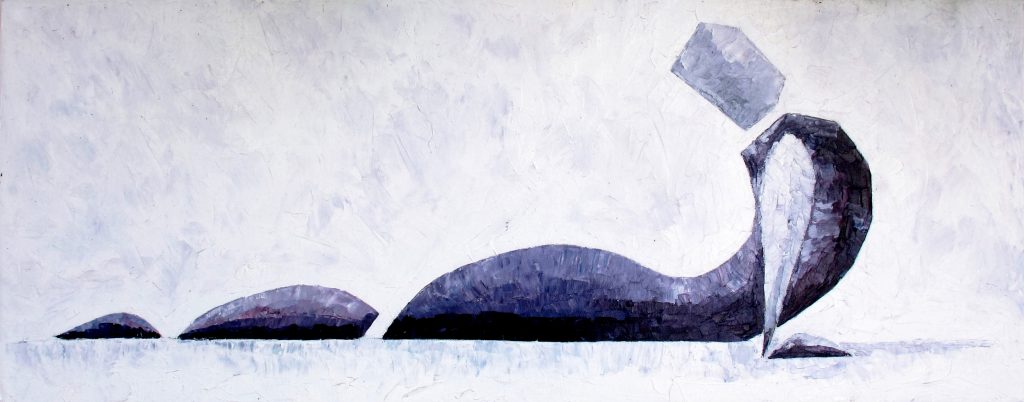
With palms pressed into the mat and elbows gently bent and hugging your body, inhale and lift the chest and head to get into a backbend.
Keep your neck relaxed and roll the shoulders back.
Body below the navel remains pressed down into the mat.
Benefits
Strengthens the entire back and shoulders.
Makes mid and upper back flexible.
Tones abdominal muscles and improves digestive system and blood circulation.
Relieves symptoms of fatigue, menstrual cycle, backache and sciatica.
Therapeutic for asthma.
Expands chest and shoulders.
8. Adho Mukha Svanasana
Exhale and lift the hips up towards the ceiling.
Try and push the heels down towards the mat. Alternatively, you can keep the knees gently bent and heels off the mat.
Slowly drop your head and try and look towards your navel.
The weight should be evenly distributed on hands and feet and neck should be relaxed.
Benefits
Increase height, stretches lower body and strengthens arms, shoulders and back.
Improves blood circulation, calms the nerves and relieves stress
Therapeutic for high bp, asthma, sciatica, sinusitis
Helps relieve symptoms of menopause, back pain and headache.
Caution
Diarrhea, eye or ear infection, wrist injuries.
For high blood pressure or headache – use support for the head.
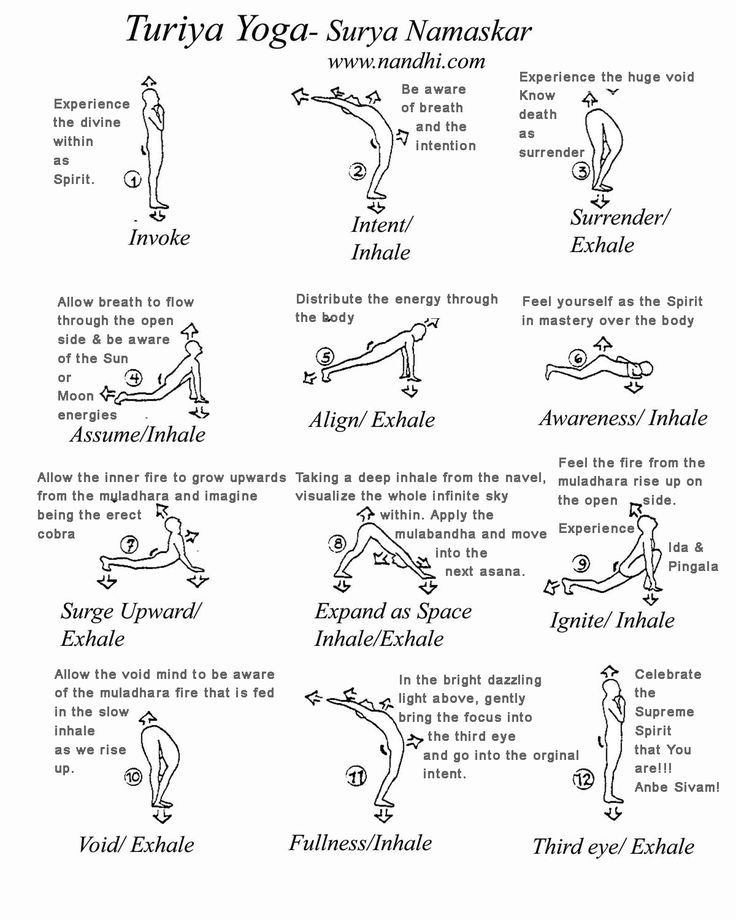
9. Ashva Sanchalanasana
Inhale and bring your right foot forward, in between your palms.
10. Padahastanasana / Utthanasana
Exhale and step your left foot forward in line with your right foot for forward bend.
11. Utthana Hasthasana
Utthana Hasthasana is also the 11th pose in Suryanamaskara.
Steps to follow:
Inhale and lift your body all the way up with your hands stretched in line with your ears.
Push your hips forward and lengthen your spine further by stretching back.
Hands can be adjusted to stay either in Namaskar mudra or shoulder width apart.
12. Pranamasana or Anjali Mudra
Return to Pranamasana. Exhale and bring hands in front of the chest for Namaskar or Anjali mudra. Feet are together or hip width apart, continue to evenly distribute weight on all four corners of your feet.
Align the centre of your head to the pelvis, and give gentle pressure on fingertips and base of your palm.
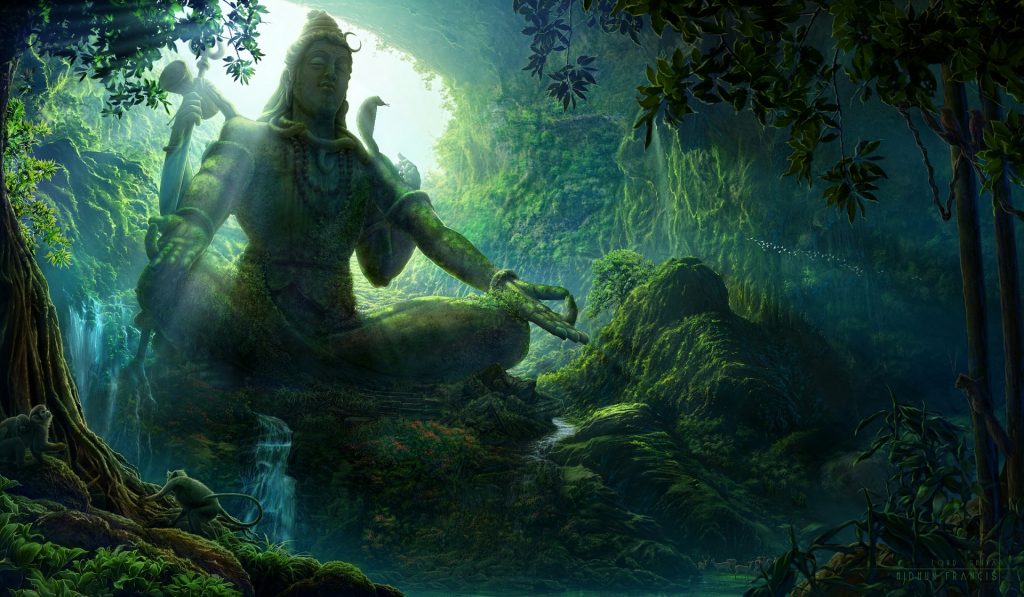
ONE CYCLE IS COMPLETE!
Now repeat the sequence, this time taking your left leg back instead of the right.
How many cycles is good?
You can start with two cycles, go on to four, then eight. Advanced yogis even reach 108 cycles; however, this takes time so don’t rush through it. Doing it correctly is more important than doing it multiple times.
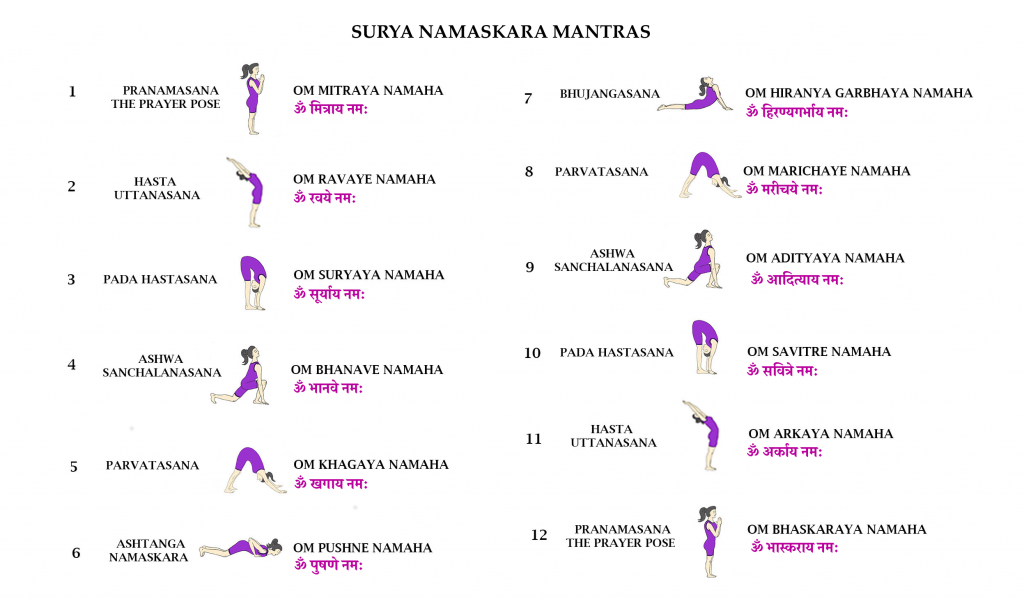
Spirituality
To deepen your practice further and for spiritual benefits, you can include mantra chanting. Surya Mantra has 12 names that are chanted in praise of the Sun and help create harmony between your physical cycles and that of the Sun’s.
By chanting the following 12 names of the Sun you are expressing gratitude and acknowledging the 12 qualities of the Sun. You can dedicate one mantra to each of the 12 steps in the following order. Breathing and chanting in the respective posture helps create more awareness and turns your asana practice into meditation.
Om Mitraya Namaha – A reliable friend to all.
Om Ravaye Namaha – The shining and knowledgeable one.
Om Suryaya Namaha – Guide to all and keeps us active.
Om Bhanave Namaha – Illuminates and bestows beauty.
Om Khagaya Namaha – Stimulator of senses who moves quickly in the sky.
Om Pushne Namaha – Giver of strength who nourishes all.
Om Hiranyagarbhaya Namaha – Creator with the golden womb, the cosmic self.
Om Marichaye Namaha – Lord of dawn and destroyer of diseases.
Om Adityaya Namaha – Son of cosmic mother Aditi who inspires.
Om Savitre Namaha – Lord of creation, the one who purifies.
Om Arkaya Namaha – Worthy of all praises and the radiant.
Om Bhaskaraya Namaha – Illuminates and leads us to enlightenment.
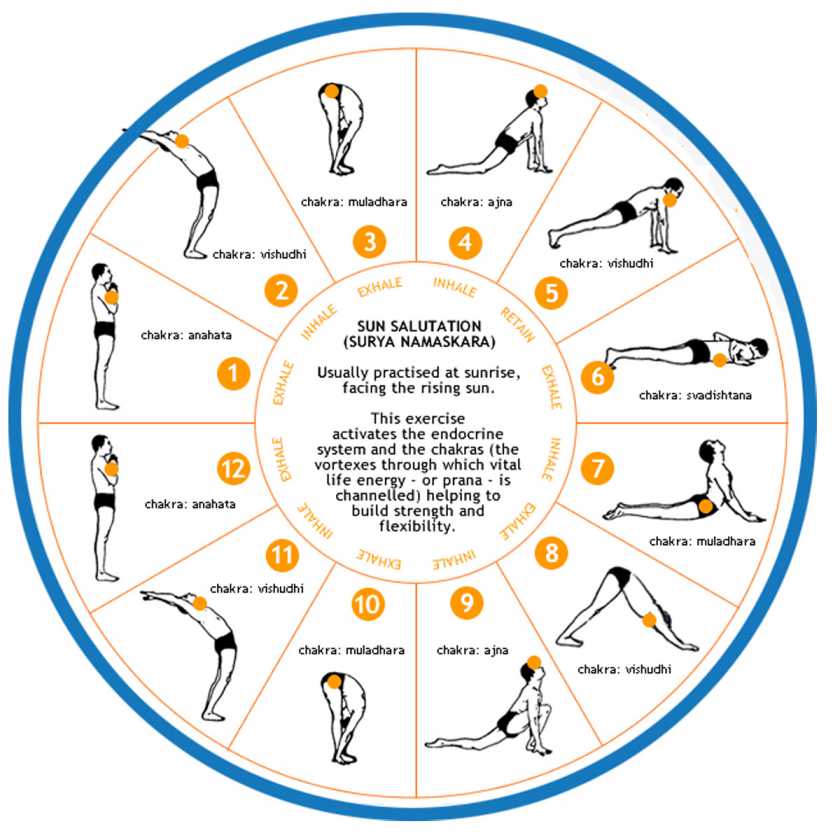
You may find it difficult to chant the 12 names if you are practicing at a fast pace. You can chant 6 bija mantras instead. These seed mantras do not have any literal meaning as such but create powerful vibrations around and within when chanted repeatedly.
In 1 cycle, the 6 mantras are repeated 4 times in the following order:
Om Hraam
Om Hreem
Om Hroom
Om Hraim
Om Hraum
Om Hrah
